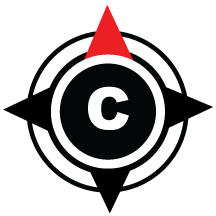You can’t predict the future, but you can stop being surprised by it.
Most leaders don’t fail because of what they didn’t see coming. They fail because they ignored the early signs.
Foresight isn’t about predicting the future. It’s about observing reality clearly enough, early enough, to act while you still have options. The best leaders aren’t fortune tellers. They’re pattern recognizers. They notice faint signals and respond before those signals become urgent.
They don’t brag about knowing what’s next. They build the capacity to handle what’s next. Whatever it is.
So if foresight isn’t about prediction, what is it?
It’s a leadership muscle. One that gets stronger with deliberate use.
Why Foresight Matters
In fast-moving industries, change rarely arrives announced. It sneaks in quietly through customer shifts, internal fatigue, or subtle data trends. By the time the warning signs are loud, it’s often too late to steer.
Leaders who practice foresight don’t live in fear of the unknown. They make it their habit to scan the horizon and spot the early warning signs early. That’s what keeps companies adaptive instead of reactive.
Foresight doesn’t remove uncertainty. It just keeps you from being caught off guard by it.
How Leaders Build Foresight
1. Pay Attention to Small Signals
Small problems rarely stay small. A dip in morale. A once-engaged employee who’s suddenly quiet. A loyal client who begins asking new kinds of questions.
Most leaders brush it off: “It’s probably nothing.” Really good leaders treat “probably nothing” like “possibly something.” They don’t overreact, but they don’t dismiss it either. They follow the thread. They ask questions. They connect dots others overlook while there’s still time to shape the outcome.
2. Run Scenarios. Not Just Plans
Plans are built around what you expect to happen. Scenarios are built around what might happen.
Smart leaders plan forward and think sideways. They ask:
-
What happens if our top performer leaves tomorrow?
-
What if our biggest client cuts volume in half?
-
What if the market shifts faster than we can react?
It’s not about paranoia. It’s about preparation. Leaders with foresight rehearse the what-ifs so that when they face them, they move faster and steadier than the rest.
3. Build Time Into the System
The best leaders don’t wait until they “have time” to think ahead. They create it.
They schedule forward-looking reviews. They force strategic pauses. They ask their teams to challenge assumptions before decisions are made, not after things break.
Foresight isn’t what happens when everything else is done. It’s what makes everything else go better.
The Discipline of Foresight
No one will thank you for the crisis you prevented. You won’t get applause for the disaster that never came. But that’s the job.
Leadership is seeing what others don’t see... yet. Acting before it’s popular. Preparing while everyone else is distracted.
You don’t need a crystal ball to lead with foresight. You just need the discipline to keep looking forward while everyone else is looking down.
When you lead that way, you stop managing by reaction and start shaping what happens next.
Pat Alacqua helps leadership teams get the right work done by the right people at the right time. Using practical tools, he prevents or fixes the operational and mental breakdowns that stall growth, allowing leaders to scale with clarity and control. He is the author of the Amazon best-seller Obstacles to Opportunity: Transforming Business Challenges into Triumphs. Learn more at PatAlacqua.com.

